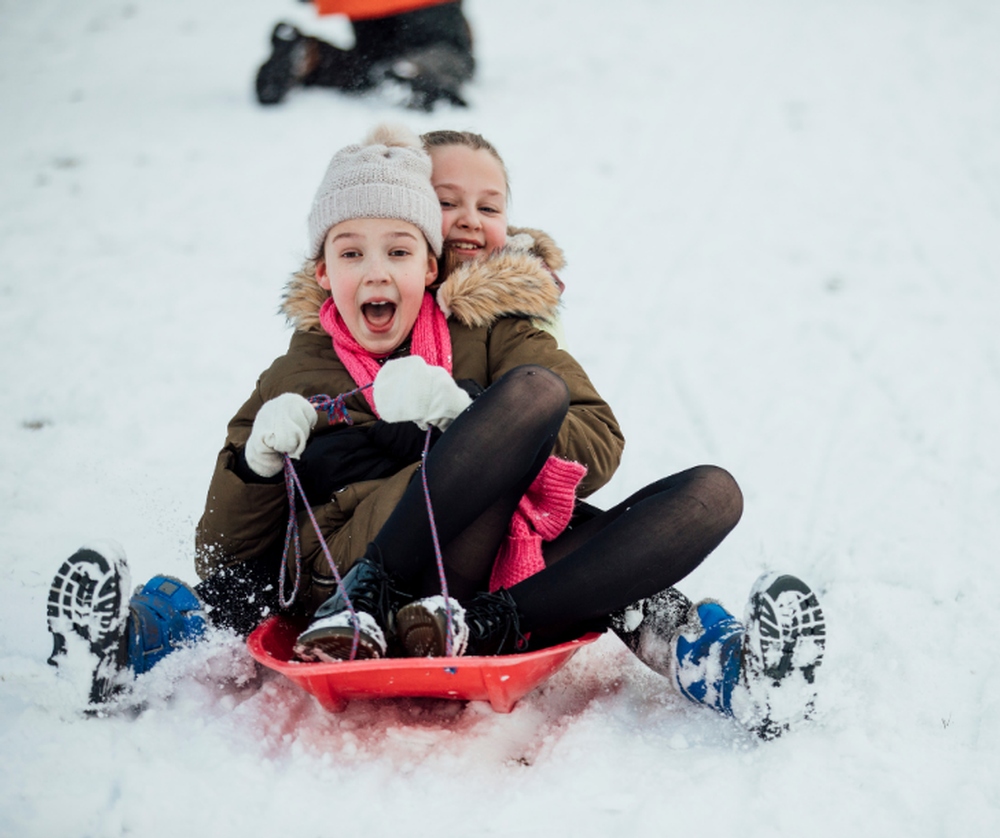Sledding and Snow

Originally posted at https://myhealth.alberta.ca/Alberta/Pages/sledding-and-snow-safety.aspx
Getting outside in the winter is a great way for families to be active. Your child needs to be safe while doing winter activities like sledding and playing in the snow. To help lower the risk of your child getting hurt, make sure:
- you supervise your child closely
- your child is always in a safe place
- you and your child know about any dangers
- your child does age-appropriate activities
General Winter Safety Tips
Look First
Check the weather forecast so you know how to dress for the day. Choose play areas with warm shelters nearby.
Wear the Gear
While outside in the winter, dress in layers, have a windproof and waterproof outer layer, and wear the following:
- a hat to keep the ears covered. It’s important that children under 3 wear a hat as they lose heat quickly from their head.
- mittens instead of gloves
- warm, dry, waterproof boots that aren’t too tight
- a neck warmer instead of scarf
- clothes without drawstrings
Get Trained
Snow forts can be fun, but building tunnels can be dangerous. Tunnels can collapse and suffocate a child.
Watch your child for wet clothes, feeling chilled, frostbite, and being tired. Remove wet clothes and boots after sledding. Teach your child about frostbite and hypothermia and how important it is to dress warmly.
Sledding
Look First
Before and during sledding, you should:
- check the outdoor temperature. Only go sledding when the temperature is above -19˚C. Think about the wind chill factor as the wind chill makes it colder than it really is.
- choose hills with a gentle slope and a long, clear run-off area
- go sledding on snowy hills. Stay away from icy surfaces
- look for a hill that is not too steep (less than 30 degrees is recommended for children) and has a long, clear runoff area
- make sure the hill has no jumps, bumps, holes, bare spots, trees, and stay away from roads, rivers, railway tracks, and parking lots
- stay off ice-covered rivers, streams, or ponds
- only go sledding in the daylight on hills that are well-lit. Don’t go sledding at night.
Your child must be supervised by a responsible adult. If your child is under 5, have a responsible adult on the sled with him or her.
Wear the Gear
- Wear a hockey or ski/snowboard helmet. For more information about helmets, go to Parachute Canada: Which Helmet for Which Activity.
- Check the sled to make sure it is in good shape.
- Use a sled with good brakes and steering.
- Plastic discs and inner tubes are not safe because they are hard to control.
Get Trained
- Go down the hill sitting up or kneeling on the sled. Don’t go head first or lay flat on the back because this increases the risk of injuring the spine.
- Make sure arms and legs stay within the sled.
- Slide down the middle of the hill.
Sledding can be activity that the entire family can enjoy. Remember the following:
- Always accompany your child when they go sledding
- Young children should not go down the hill alone
- Teach your child to move quickly out of the way and walk up the side of the hill away from others.
- If your child is tired, they should stop and rest. If they're cold, take them indoors.